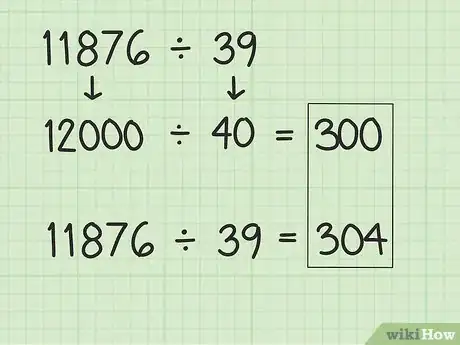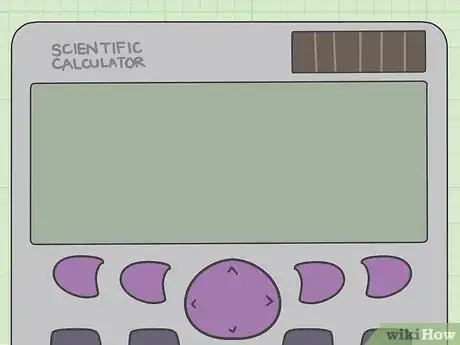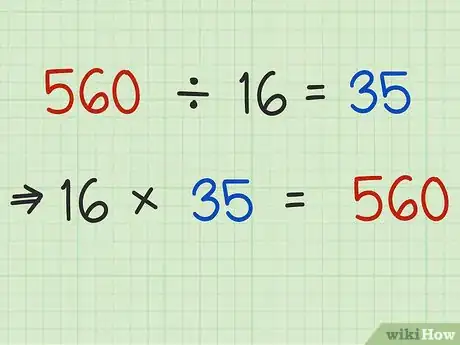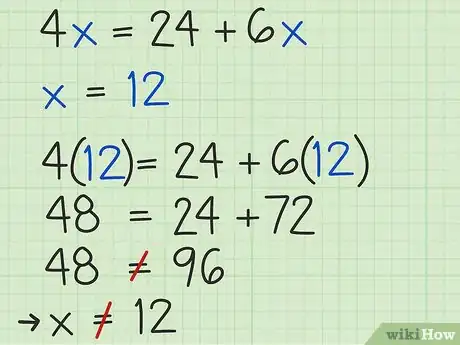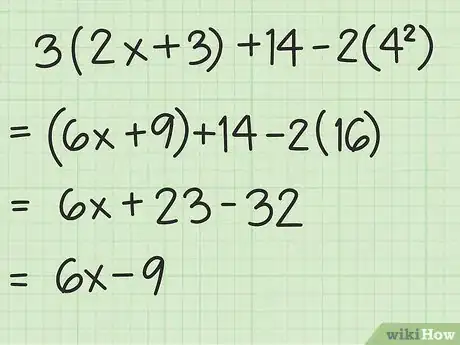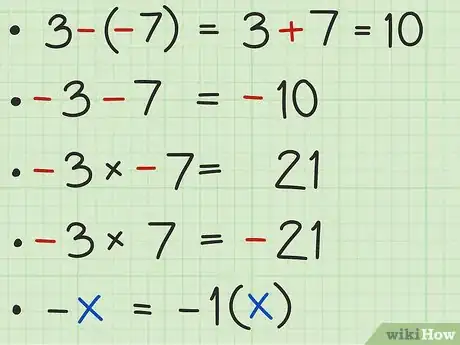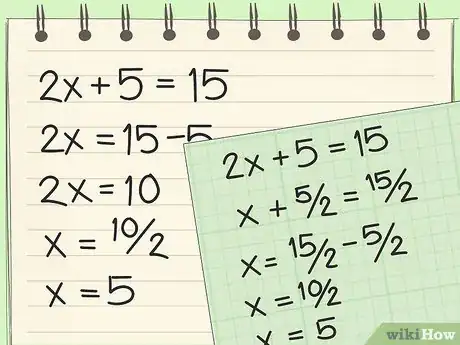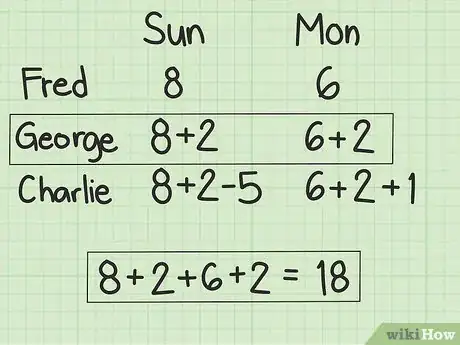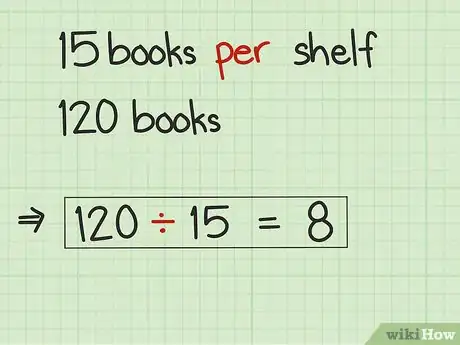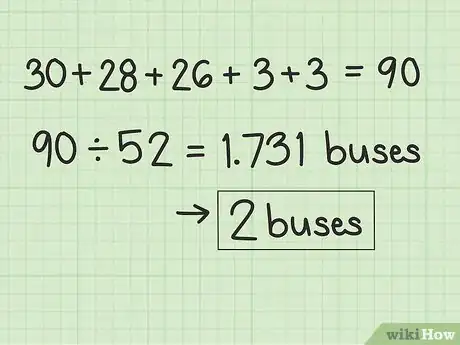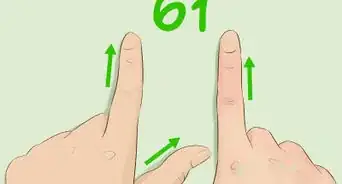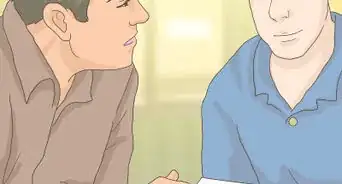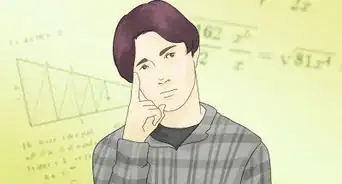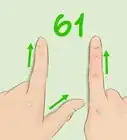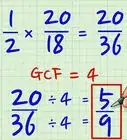This article was co-authored by Ronitte Libedinsky, MS. Ronitte Libedinsky is an Academic Tutor and the Founder of Brighter Minds SF, a San Francisco, California based company that provides one-on-one and small group tutoring. Specializing in tutoring mathematics (pre-algebra, algebra I/II, geometry, pre-calculus, calculus) and science (chemistry, biology), Ronitte has over 10 years of experience tutoring to middle school, high school, and college students. She also tutors in SSAT, Terra Nova, HSPT, SAT, and ACT test prep. Ronitte holds a BS in Chemistry from the University of California, Berkeley, and an MS in Chemistry from Tel Aviv University.
There are 12 references cited in this article, which can be found at the bottom of the page.
This article has been viewed 85,792 times.
You probably hear all the time that you should check your math work. How to do that, however, might not be clear. There are a number of ways you can check the solution to your math work, depending on whether you are completing basic arithmetic problems, algebra, or word problems.
Steps
Checking Basic Arithmetic
-
1Make an estimate. This can help you check that your answer is reasonable. To estimate, round whatever numbers you are working with to numbers that you can easily manipulate in your head. Then perform the calculation and note the estimated value. When you complete the calculations using the actual numbers, compare how close your answer is to your estimate. If it is in the ballpark of your estimate, you know your calculations are likely correct.[1]
- For example, if you are calculating , you can round 11,876 up to 12,000, and 39 up to 40. Then, you can calculate in your head using basic math facts that . Then complete you exact calculation. If you get that , remainder , you can see that your answer and estimate are close, and therefore your calculation is likely correct.
-
2Use a calculator. You shouldn’t use a calculator to complete your math work, unless your teacher tells you it is okay. However, there is nothing wrong with using a calculator to check your answer once you have finished calculating.
- If you discover with the calculator that your answer is incorrect, don’t simply change your answer. Go back through your work and see where you made a mistake in the calculating process, then show the necessary work needed to find the right answer.
- If you don’t show your work on a math problem, your teacher might think you did everything on a calculator and won’t give you any credit.
Advertisement -
3Use the inverse operation. Inverse operations are opposite operations that undo one another. Addition and subtraction are inverse operations. Multiplication and division are inverse operations. You can create true equations with the same three numbers using inverse operations.[2]
- For example, if you find that , you should be able to make a multiplication problem with the same three numbers by multiplying the divisor (the number you are dividing by) by the product: . If the equation you make with the inverse operation is true, then your calculation is correct.
Checking Algebra
-
1Plug the solution back into the equation. This is the simplest way to check that your answer is correct. If you solved for a variable or multiple variables, plug these solutions back into the equation and work backwards to see if they make the equation true.[3] If they do, then the solutions are correct. If the resulting equation isn’t true, then you know you’ve made a mistake in your calculations.[4]
- For example, if you are working with the equation , and you find that , substitute 12 into the equation for to see if it makes the equation true:
Since the equation isn’t true, you know that 12 isn’t the correct solution, and you need to go back and check your work.
- For example, if you are working with the equation , and you find that , substitute 12 into the equation for to see if it makes the equation true:
-
2Double-check the order of operations. Look back through your work and make sure that you completed all of your calculations in the correct order. You can recall the acronym PEMDAS to remember parentheses, exponents, multiplication, division, addition, and subtraction.[5]
- For example, if you are solving the equation and you go back and see that your first step was to subtract 2 from 14, you know your answer is wrong, because you should have calculated the values in parentheses and exponents first, and then completed multiplication, before you did any adding and subtracting.
-
3Double-check signs. A common error in algebra is making mistakes when working with positive and negative values. Go over your work again, and keep in mind the following rules about positive and negative signs:
- Subtracting a negative number is the same as adding it.()[6]
- Adding two negative numbers together results in a negative number. ()
- A negative time a negative equals a positive.()
- A negative times a positive equals a negative.()[7]
- The variable is not necessarily negative. The negative sign indicates that it is the opposite of whatever is. So, if is positive, is negative. If is negative, is positive.
-
4Set the work aside. It helps to check your work with fresh eyes. If you have a problem that is giving you a lot of trouble, set it aside for a few hours, then come back to it later. On a separate sheet of paper, try reworking the problem without going over your original work. If possible, use a different method to solve this time. If your original solution and the new one match, you can be confident that your answer is correct.
-
5Use an algebra calculator. There are a number of calculators available online that allow you to type in your work, including variables, and calculate the solution. Most calculators also show you the steps needed in order to arrive at the solution. Some good sites for algebra calculators include Symbolab[8] and Mathway.[9]
- As when using a regular calculator, don’t use an algebra calculator to do your work for you. Do the problems first, then use the algebra calculator to check your solutions. If your answer is incorrect, go back and rework the problem; don’t just copy the solution from the calculator.
Checking Word Problems
-
1Re-read the problem. Make sure you completely understand what you are trying to find. Wordy math problems can sometimes be confusing, so re-read carefully to make sure you were solving the right problem. Also double-check that you understood what the information in the problem meant.[10]
- For example: “Fred picks 8 apples on Sunday, and 6 apples on Monday. George picks 2 more apples than Fred each day. Charlie picks 5 less apples than George on Sunday, and 1 more apple on Friday. How many apples does George pick?” Here, make sure to solve for the amount of apples George picks, not the amount Charlie picks or the amount all of them pick together. Also, make sure you understand all of the details of the problem. For example, each day, George picks 2 more than Fred’s daily total. He doesn’t pick 2 more than Fred’s 2-day total.
-
2Check keywords and numbers against your calculations. Word problems are full of keywords that help you translate the words into math. Highlight these keywords in the problem. Also highlight the numbers. Then, go back to your calculations and double check that the operations and numbers in your calculations match what is presented in the problem.[11]
- Some common keywords include “combined” (addition), “decreased” (subtraction), “of” (multiplication), and “per” (division).[12]
- For example: “Carlos has 15 books per book shelf. He has 120 books. How many shelves does he have?” The key word “per” should tell you this is a division problem. If you go back to your work and see that you calculated , you know that you did the wrong calculation.
-
3Check for reasonableness.[13] Think about the information in the problem and the solution you are trying to find. Decide whether your answer should be bigger than the numbers represented in the problem, or smaller. Think about whether your answer should be a whole number. If your solution has a remainder or a decimal, make sure that it makes sense in the context of the story problem.[14]
- For example: “Mr. Ripley needs to book buses for the fourth grade field trip. Each bus holds 52 people. He has 30 students. The two other fourth grade teachers have 28 students and 26 students, respectively. There will also be one adult chaperoning each class, plus the three teachers. How many buses does Mr. Ripley need to book for the field trip?” If you add up all of the people going on the field trip (90), and divide by the number of people that fit on one bus (52), you get 1.731. But Mr. Ripley can’t book seven-tenths of a bus. So, if you put down 1.731 as your answer to this problem, you know it is not a reasonable answer. You need to round up your answer to 2.
Expert Q&A
Did you know you can get expert answers for this article?
Unlock expert answers by supporting wikiHow
-
QuestionHow do you check your math answer?
 Ronitte Libedinsky, MSRonitte Libedinsky is an Academic Tutor and the Founder of Brighter Minds SF, a San Francisco, California based company that provides one-on-one and small group tutoring. Specializing in tutoring mathematics (pre-algebra, algebra I/II, geometry, pre-calculus, calculus) and science (chemistry, biology), Ronitte has over 10 years of experience tutoring to middle school, high school, and college students. She also tutors in SSAT, Terra Nova, HSPT, SAT, and ACT test prep. Ronitte holds a BS in Chemistry from the University of California, Berkeley, and an MS in Chemistry from Tel Aviv University.
Ronitte Libedinsky, MSRonitte Libedinsky is an Academic Tutor and the Founder of Brighter Minds SF, a San Francisco, California based company that provides one-on-one and small group tutoring. Specializing in tutoring mathematics (pre-algebra, algebra I/II, geometry, pre-calculus, calculus) and science (chemistry, biology), Ronitte has over 10 years of experience tutoring to middle school, high school, and college students. She also tutors in SSAT, Terra Nova, HSPT, SAT, and ACT test prep. Ronitte holds a BS in Chemistry from the University of California, Berkeley, and an MS in Chemistry from Tel Aviv University.
Academic Tutor There are a couple of ways to check your math answer. The easiest way is to plug your solution back into the problem and work backwards to see if you get the right numbers that way. You can also take a look at your answer and see if it makes sense. For example, if you got a very large number for your answer, and you've been working with smaller numbers, you may not have the right solution.
There are a couple of ways to check your math answer. The easiest way is to plug your solution back into the problem and work backwards to see if you get the right numbers that way. You can also take a look at your answer and see if it makes sense. For example, if you got a very large number for your answer, and you've been working with smaller numbers, you may not have the right solution. -
QuestionHow do I work out 15% of something?
 DonaganTop AnswererConvert 15% to 0.15, then multiply it by the number you're working with.
DonaganTop AnswererConvert 15% to 0.15, then multiply it by the number you're working with. -
QuestionWhat is the least number that is divisible by 2,4,5,8 and 10?
 DonaganTop AnswererIt's 40. 40 is 2 x 4 x 5. You don't use 8 or 10 as factors, because they can both be factored into two of the other numbers being considered (8 is 2 x 4, and 10 is 2 x 5).
DonaganTop AnswererIt's 40. 40 is 2 x 4 x 5. You don't use 8 or 10 as factors, because they can both be factored into two of the other numbers being considered (8 is 2 x 4, and 10 is 2 x 5).
References
- ↑ Ronitte Libedinsky, MS. Academic Tutor. Expert Interview. 26 May 2020.
- ↑ http://www.virtualnerd.com/middle-math/equations-functions/expressions/inverse-operations-definition
- ↑ Ronitte Libedinsky, MS. Academic Tutor. Expert Interview. 26 May 2020.
- ↑ https://flexbooks.ck12.org/cbook/ck-12-algebra-i-concepts/section/1.8/primary/lesson/checking-solutions-to-equations-alg-i/
- ↑ https://www.mathsisfun.com/operation-order-pemdas.html
- ↑ http://www.mathsisfun.com/positive-negative-integers.html
- ↑ http://www.mathsisfun.com/multiplying-negatives.html
- ↑ https://www.symbolab.com/solver/algebra-calculator
- ↑ https://www.mathway.com/ProblemWidget.aspx?subject=Algebra
- ↑ https://www.readingrockets.org/article/reading-and-understanding-written-math-problems
- ↑ https://www.purplemath.com/modules/translat.htm
- ↑ http://www.purplemath.com/modules/translat.htm
- ↑ Ronitte Libedinsky, MS. Academic Tutor. Expert Interview. 26 May 2020.
- ↑ https://sciencing.com/estimate-division-problems-10004196.html
